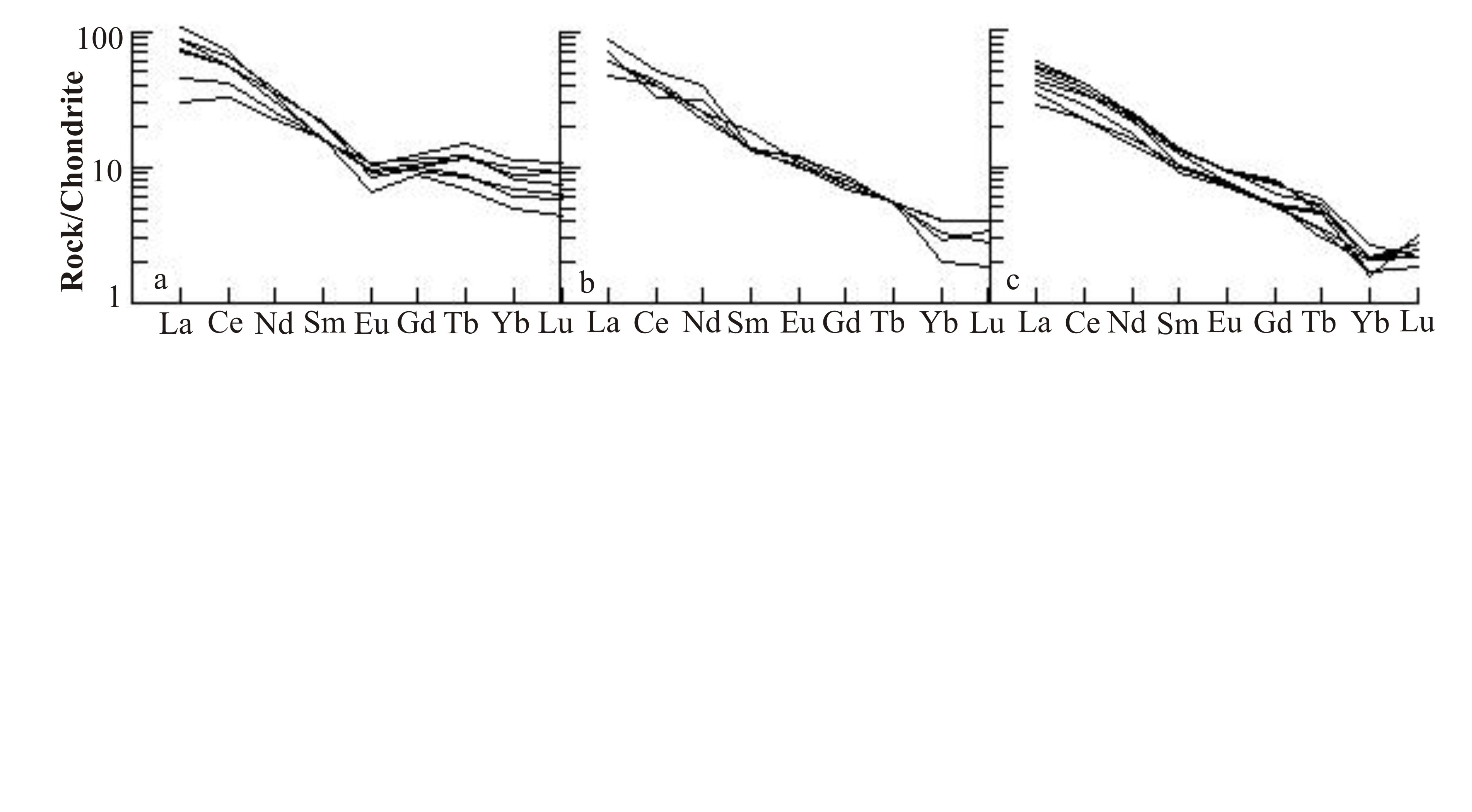|
GRANITOIDS OF ERDENETUIN-OBO PORPHYRY Cu-Mo DEPOSIT (NORTHERN MONGOLIA): Sr, Nd ISOTOPY AND GEODYNAMICS Berzina A.P., Gimon V.O., Ponomarchuk V.A. Institute of Geology and Mineralogy SB RAS, Novosibirsk, Russia, berap@uiggm.nsc.ru
The Erdenetuin-Obo porphyry Cu-Mo deposit is situated within the Erdenet granitoid massif of the Selenga complex. Mineralization is associated to the porphyry stocks and dikes of the ore-bearing complex located within granitoids of the Selenga complex. The time gap between ore-bearing porphyries and their host granitoids is about 5 Ma (Sotnikov et al., 2005). Among igneous rocks of these complexes, the varieties with silica content of 66-68 wt.% and sum of alkalis of 7-7.5 wt.% are predominant. Potassium-sodium and sodium granitoids are distinguished in the Selenga complex with values of K2O/Na2O being equal 0.7-1.1 and 0.3-0.6, respectively. By K2O content, the potassium-sodium granitoids correspond to high-potassium calc-alkaline series, while sodium granitoids - to calc-alkaline one. The most abundant porphyries in the ore-bearing complex correlate in composition with sodium granitoids of the Selenga complex. In the Selenga complex, sodium granitoids are enriched in Sr (up to 1100 ppm), Ba (up to 1500 ppm) and depleted in Rb(<50 ppm) compared to potassium-sodium varieties. HREE and HFSE concentrations in sodium granitoids are less than those in potassium-sodium varieties at moderate contents of light and middle rare earth elements (LREE, MREE), minor contents of heavy rare earth (HREE) and high field strength elements (HFSE) in granitoids. By these features, ore-bearing porphyries correlate with sodium granitoids of the Selenga complex. In addition, these rocks are similar by Sr and Nd isotope compositions. The estimated Nd(T) values for sodium granitoids and porphyries are 1.91 and 1,49; the ratios 87Sr/86Sr in apatites from these rocks are 0.70414 and 0.70418, respectively. For potassium-sodium granitoids, the obtained Nd(T) and 87Sr/86Sr values are 3.84 and 0.70420, respectively. By some geochemical parameters, sodium granitoids of the Selenga complex and ore-bearing porphyries are close to adakites (Na2O >4 wt.%, Al2O3 ≈ 16 wt.%, Rb/Sr <0.15, Sr/Y >70, (La/Yb)n>14, low HREE, Y, Nb contents, no Eu anomaly). Formation of adakite magma was thought to be related to melting of oceanic crust during its subduction under the continent. The association between porphyry Cu-Mo deposits and adakite-like rocks established in many regions of the world (Thiéblemont et al., 1997; Oyarzum et al., 2001 etc.) served as an evidence of genetic relation of ore mineralization with melting the oceanic crust. However numerous new data indicate that rocks with adakite-like features may form during partial melting the thickened crust, delamination of mafic lower crust as well as during assimilation and fractional crystallization of basalt magma at the crust base. According to experimental data, sodium granitoid melts resulted from 10-40% melting the hydrated metabasalt in equilibrium with crystalline plagioclase+amphibole residue at 8 kbar and garnet+amphibole (without plagioclase) residue at 16 kbar (Drummond, Defant, 1990; Petford, Atherton, 1996; Martin, 1999).
Fig. 1. Chondrite
normalized REE distribution (McDonough, Sun, 1995) in
potassium-sodium (a), sodium granitoids of the Selenga complex (b),
and porphyries of the ore-bearing complex (c).
REE spectra
(Fig.
1) obtained for potassium-sodium granitoids show a clearly expressed
negative Eu anomaly indicating the melt formation at the depth less
than 25 km within plagioclase stability field. Sodium granitoids and
porphyries REE spectra are characterized by a steep slope in the MREE
and HREE parts indicating the formation of parent melts at the depth
about 50 km in the stability field of amphibole and garnet.
Plagioclase instability under these conditions is supported by high
Sr content in rocks, positive peaks on the spider-diagrams and
absence of Eu anomaly on the REE spectra.
In general,
granitoids of the Erdenetuin-Obo deposit have Sr isotope composition
corresponding to the mantle values (0.70414-0.70431). The estimated
Nd(T)
value for potassium-sodium granitoids (3.84) is higher compared to
those obtained for sodium granitoids (1.91) and porphyries (1.49).
This estimate is close to Nd(T)
of gabbros from the Selenga complex (4.10) that crystallized from
melts entered from shallow magma chamber. With respect to sodium
granitoids and porphyries, potassium-sodium granitoids crystallized
from differentiated melts which formed at shallower depths.
The isotope
compositions of granitoids show their relation with mantle processes.
Small gabbroid outcrops
relative to granitoids do not permit us to consider the latter ones
as differentiates of basaltoid magma. It is supposed that granitoid
magma resulted from melting the basic rocks which were accumulated in
the lower crust (Berzina, Sotnikov, 2007) during multiple
manifestations of basaltoid magmatism in the deposit area. The
repeated alternation of basaltoid and granitoid magmatism suggests
that basalt magma initiated the substratum-melting process with
formation of granitoid melt.
Granitoids of
the Selenga and porphyry ore-bearing complexes formed in the time
span 250-230 Ma. In this period, intraplate magmatisms widely
occurred within the North Mongolia territory. Two stages are
distinguished in its development: Late Paleozoic and Early Mesozoic
(Yarmolyuk, Kovalenko, 2003; Vorontsov et al., 2007). Within the area
of the Erdenetuin-Obo, volcanic rocks of trachyandesibasalt series
(P2-T1)
and gabbroids of the Schivota complex are correlated with intraplate
magmatism of the Late Paleozoic stage, while trachyandesibasalt dikes
of post-ore dike complex – with that of the Early Mesozoic
stage. Rocks of the Selenga and porphyry complexes formed prior to
derivates of intraplate magmatism of the Early and Late stages,
respectively. Thus, it is supposed that development of Selenga and
porphyry magmatism is a result of interaction between deep seated
plume and the lithosphere of the continental margin. Plume uplift
ended with lithosphere break through by its derivates which were
marked on the surface by basaltoid and bimodal magmatism.
The authors are grateful to Dr.
of geol.-min. sc. T.B. Bayanova and P.A. Sergeev (Geological
Institute of KSC RAS) for Nd isotope determinations.
The work was
supported by the grant 07-05-00664 from the Russian Foundation for
Basic Research.
|
